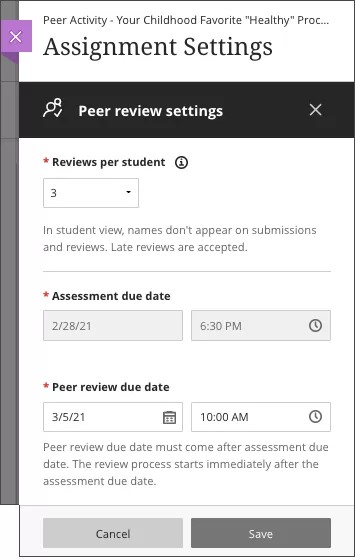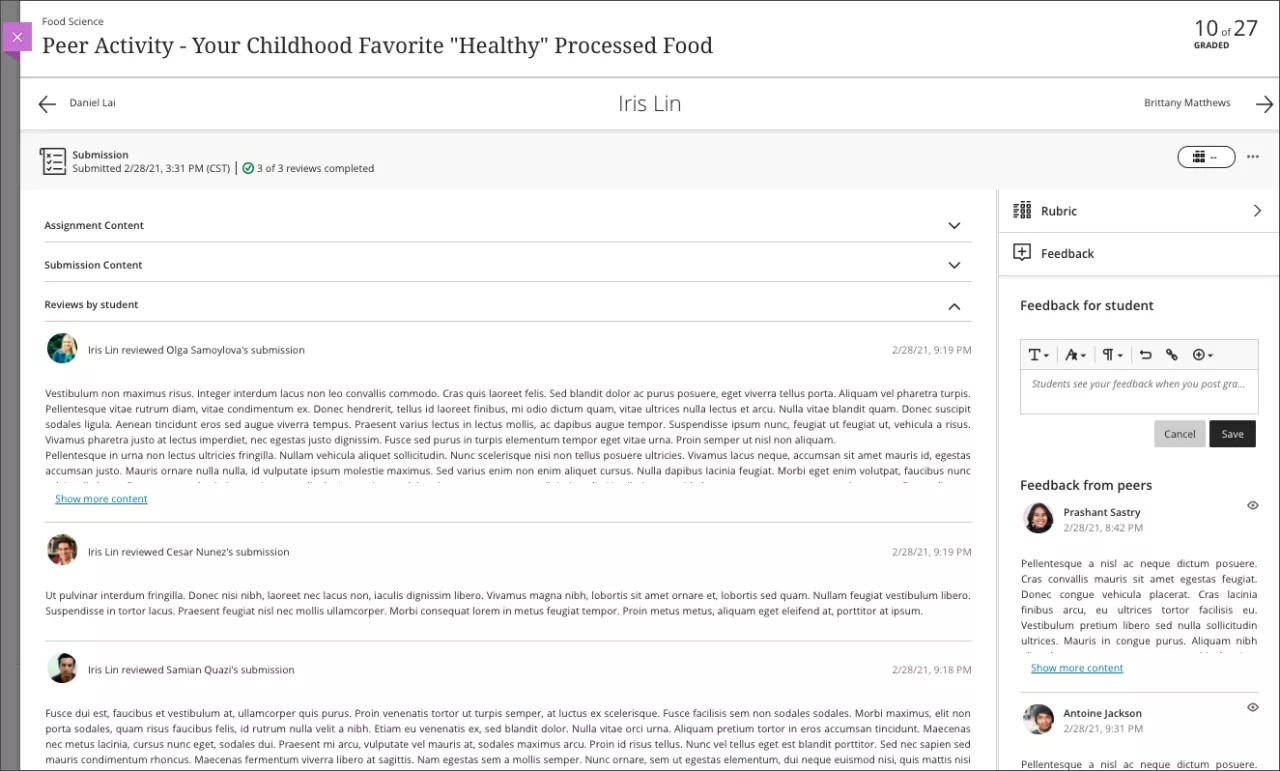Assignment with Peer Review for Qualitative Peer Assessment
Blackboard Learn SaaS Continuous Delivery v3900.10.0 | Release to Production 1 April 2021
Ultra Course View
In the Ultra Course View, we started to implement the developments we've projected to improve the Peer Review Assessments experience. This is a synthetized description of what we've prepared for this release.
Peer assessment is a practice becoming more common because it encourages development of students’ critical thinking abilities, gives them practice in critique of others in a professional manner, and allows for measurement of students’ analysis and communication skills. With this release, qualitative peer review can be enabled for an Assignment in the Ultra Course View. It’s simple for instructors and students to use, and has the following features:
- Set different due dates for the initial assignment submission and the completion of peer review: Instructors can set how many reviews are expected from each student. Peers are assigned randomly and automatically.
- Late submitters and reviewers remain part of the task and can continue to participate: Instructors can clearly see who was late. This is a huge improvement over the implementation in Original Course View and superior to implementations found it other learning management systems where students who are late on anything can no longer participate.
- Tracking: Instructors can track students’ progress toward completion.
- Rubrics: Students can see the rubric that will optionally be used for the grade. Instructors can grade using a rubric.
- Complete, single view: When grading, the instructor can see all this information in a single view: the student’s submission, feedback provided by the students’ peers, and the feedback the current student gave to their peers.
- Anonymous mode for students: The identities of peers are hidden from students but viewable by instructors.
- Censoring: Instructors can hide reviews deemed inappropriate or harmful.
As this is a first release of the Peer Review option for Assignments, there are some relevant use cases that aren’t part of this development, but are planned as future improvements. Some of them include:
- Quantitative peer reviews: While a peer can view a rubric for guidance on providing feedback, the rubric can’t be used by students to provide a score.
- Non-anonymous mode for students: Names of peers are always hidden from students. If an instructor wants students to know who they evaluate, it is necessary to request students to add their names to their submissions. Hidden names from instructors are not supported in this release.
- Groups: There is no direct group support yet. However, because the review period excludes non-submitters automatically, it’s possible to set up multiple assignments with Peer Review enabled and set Conditional Availability by group membership. This way, assigned peers will always be members within a student’s group. Group submissions aren’t supported in this release.
- Multiple prompts with essay questions: In this release, only a single text prompt is supported for an Assignment with Peer Review. If there are multiple topics to which s student is to respond and receive feedback, those should all be outlined in a single prompt or broken up into several assignments.
- Separate grades for students’ submissions and their reviews: In this release, there is a single grade and rubric for an assignment. If the instructor wishes to communicate different scores for those two parts of the process, those can be outlined in the feedback.


